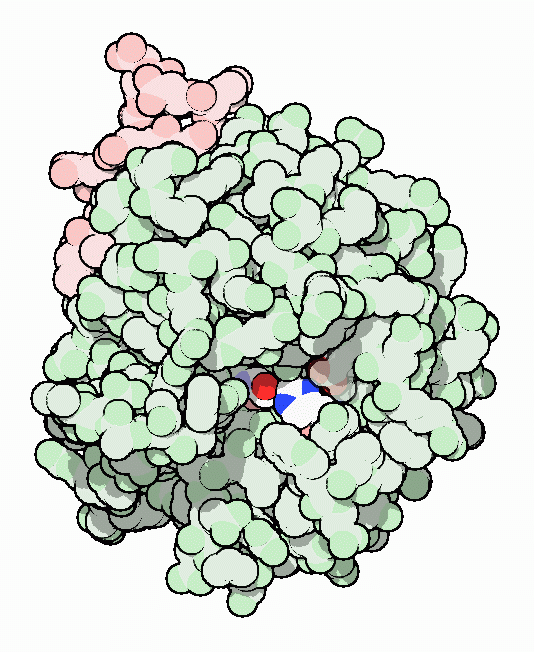|
Inhaltsübersicht | Nanomaschinen | Moleküle | Programme | Kurse | Fun | Links |
||
| > |
Thrombin

Oxygen and nutrients are delivered throughout our bodies through the watery transport system of the blood. Using a liquid delivery method poses two challenges. First, it leaves the entire body open to infection, since bacteria and viruses will be quickly distributed everywhere that the blood goes. The immune system, with antibodies as the first line of defense, fights this danger. Second, there is the constant danger of damage to the blood circulatory system. Blood is pumped throughout the body under pressure, and any small leak could lead to a rapid emptying of the entire system. Fortunately, the blood carries an emergency repair system: the blood clotting system. When we are cut or wounded, our blood builds a temporary dam to block the damage, giving the surrounding tissues time to build a more permanent repair.
A Molecular Pyramid Scheme
Thrombin is at the center of this process of blood clotting. Blood clotting starts with molecules that sense that something is wrong. For instance, the protein tissue factor is found on the surfaces of cells that are not normally in contact with the blood. If tissue is cut, the blood flows out of the blood vessels and encounter tissue factor. Then, a cascade of signaling starts, beginning with a few tissue factor molecules and amplifying, like a pyramid scheme, into a response large enough to cure the entire problem. Tissue factor activates a few molecules of Factor VII. These then activate a lot of Factor X. And finally, these activate even more thrombin. Thrombin, when activated, then translates this signal into action. It clips a little piece off of the large protein fibrinogen, causing it to assemble into large stringy networks. These networks then trap lots of blood cells, forming the dark red scab that blocks the damage.Selective Digestion
Thrombin is a serine protease: a protein-cutting enzyme that uses a serine amino acid to perform the cleavage. Other examples of serine proteases are trypsin and chymotrypsin, enzymes involved in digestion. Thrombin, however, is more specific than these gastrointestinal cleavage machines. It is designed to perform the specific cleavage needed to activate fibrinogen, without digesting all the other important proteins in the blood. The active site is seen here, in the structure of activated thrombin from PDB entry 1ppb, at the base of a deep groove. The oxygen atom of the key serine amino acid is shown in bright red, and the two bright blue nitrogen atoms are part of a histidine that activates the serine. An aspartate, to the left of the histidine and hidden under another amino acid, also helps in the activation.Last changed by: A.Honegger,